The Intel SSD 320 Review: 25nm G3 is Finally Here
by Anand Lal Shimpi on March 28, 2011 11:08 AM EST- Posted in
- IT Computing
- Storage
- SSDs
- Intel
- Intel SSD 320
It's called the Intel SSD 320, but the part number should give away just what we're looking at here:
This is the long awaited third generation Intel based SSD. This is the G3. And at this point it's around 6 months late.
Back then it was simply called the Postville Refresh on Intel's roadmaps (Postville was the 34nm Intel X25-M G2). It would use 25nm Intel NAND, feature improved performance and full disk encryption - all behind a 3Gbps SATA interface.
When I spoke with Intel about the drive last year, all indications pointed to it being faster than drives based on SandForce's SF-1200 controller. And it is:
| Intel SSD 320 300GB vs. Corsair Force F120 | ||||
| AT Storage Bench 2011 (Heavy) | AT Storage Bench 2011 (Light) | |||
| Corsair Force F120 | 120.1 MB/s | 155.9 MB/s | ||
| Intel SSD 320 300GB | 132.8 MB/s | 161.7 MB/s | ||
Without turning to any real time compression/deduplication techniques, Intel has built a drive that's faster than the SF-1200. You also get that famed Intel SSD reliability:
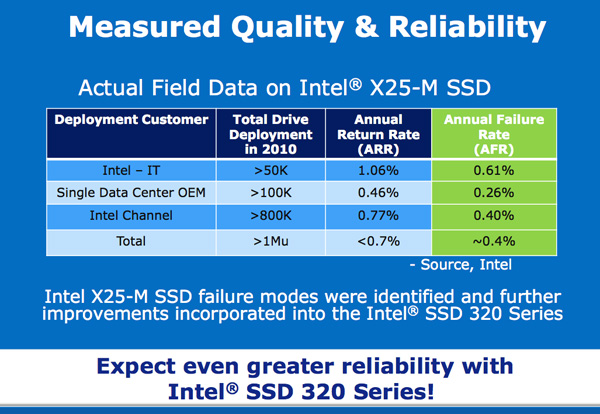
There's just one issue. The SF-1200 was the king of 2010. This year is shaping up to be all about the SF-2200 and the G3 isn't quite as competitive there. Intel realized this as well and thus we got the Intel SSD 510 to address the high performance market. Intel claims the 510 should have the same failure rate as the 34nm X25-M G2 at ~0.6% per year.
The Intel SSD 320 by comparison is aimed at the mainstream market. Remember that's what the M in X25-M always stood for to begin with. As a result we get lower pricing:
| Intel SSD Comparison | ||||||||||||
| X25-M G2 160GB | Intel SSD 320 40GB | Intel SSD 320 80GB | Intel SSD 320 120GB | Intel SSD 320 160GB | Intel SSD 320 300GB | Intel SSD 320 600GB | SSD 510 120GB | SSD 510 250GB | ||||
| User Capacity | 149GB | 37GB | 74GB | 111GB | 149GB | 279GB | 558GB | 111GB | 232GB | |||
| Random Read Performance | Up to 35K IOPS | Up to 30K IOPS | Up to 38K IOPS | Up to 38K IOPS | Up to 39K IOPS | Up to 39.5K IOPS | Up to 39.5K IOPS | Up to 20K IOPS | Up to 20K IOPS | |||
| Random Write Performance | Up to 8.6K IOPS | Up to 3.7K IOPS | Up to 10K IOPS | Up to 14K IOPS | Up to 21K IOPS | Up to 23K IOPS | Up to 23K IOPS | Up to 8K IOPS | Up to 8K IOPS | |||
| Sequential Read Performance | Up to 250MB/s | Up to 200MB/s | Up to 270MB/s | Up to 400MB/s (6Gbps) | Up to 500MB/s (6Gbps) | |||||||
| Sequential Write Performance | Up to 100MB/s | Up to 45MB/s | Up to 90MB/s | Up to 130MB/s | Up to 165MB/s | Up to 205MB/s | Up to 220MB/s | Up to 210MB/s (6Gbps) | Up to 315MB/s (6Gbps) | |||
| Price | $404 | $89 | $159 | $209 | $289 | $529 | $1069 | $284 | $584 | |||
It's still early in the 25nm ramp, but the 25nm Intel SSD 320 is cheaper than the 34nm Intel SSD 510. The only issue is that OCZ is very competitive with its pricing as well and compared to the Vertex 2, Intel's SSD 320 isn't really any cheaper. Intel likes to maintain its 65% profit margins so even though it makes the NAND and the controller in the 320, we're unlikely to see these drives drop below competitive pricing.
Intel expects the 25nm SSD 320 to be even more reliable than the 510 or X25-M.
The Same Controller
The Intel SSD 320, like the 310 and X25-M before it, uses an Intel branded controller. Opening up the 320 reveals a near identical controller to what we saw in the 34nm X25-M G2 housing:
You'll notice the part number is identical to 2009's X25-M G2 controller. In fact, it's the same controller. Apparently the G2 controller had a number of features on-die, but not implemented in firmware. Things like full disk encryption and NAND redundancy never made it out in G2 but are here in the 320 all thanks to new firmware. And no, G2 owners aren't getting it.

Intel's X25-M G1 Controller

Intel's X25-M G2 Controller
Since the controller hasn't changed, the basic architecture of the SSD hasn't changed either. Intel still doesn't store any user data in its external DRAM cache and there's still a 256KB on-die SRAM.
Next to the Intel controller is a 64MB 166MHz SDRAM device, now made by Hynix. You'll notice that the DRAM chip is a lot smaller than what we've seen in previous X25-M generations, despite growing in capacity. Intel actually turned to mobile SDRAM for use in the SSD 320 to help save on power. While the X25-M G1 and G2 both used a conventional 3.3V SDRAM device, Intel moved to a 1.8V mobile SDRAM chip with the 320.
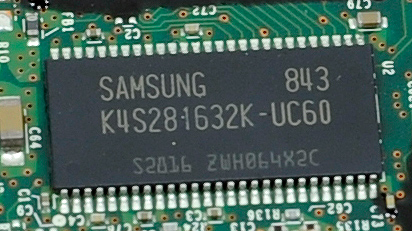
Intel X25-M G1: 16MB 166MHz SDRAM
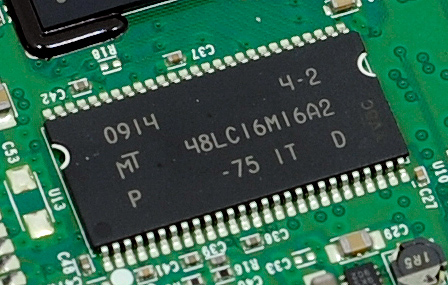
Intel X25-M G2: 32MB 133MHz SDRAM
Intel always prided itself on not storing any user data in its DRAM cache. The external DRAM is only used to cache mapping tables and serve as the controller's scratchpad. In the event of a sudden loss of power, Intel only has to commit whatever data it has in its SRAM to NAND. To minimize the amount of data loss in the event of a sudden power failure, Intel outfitted the SSD 320 with an array of six 470µF capacitors in parallel.
We've seen large capacitors on SSDs before, primarily the enterprise SandForce drives that boast a 0.09F supercap. Intel claims that for its design a single large capacitor isn't necessary given the minimal amount of data that's cached. It further claims that an array of multiple capacitors in parallel allows for much better reliability - if one capacitor fails the array is still useful (vs. a single point of failure in the case of the supercap).


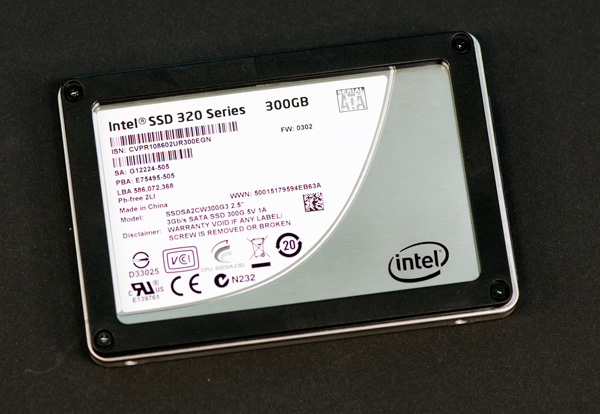
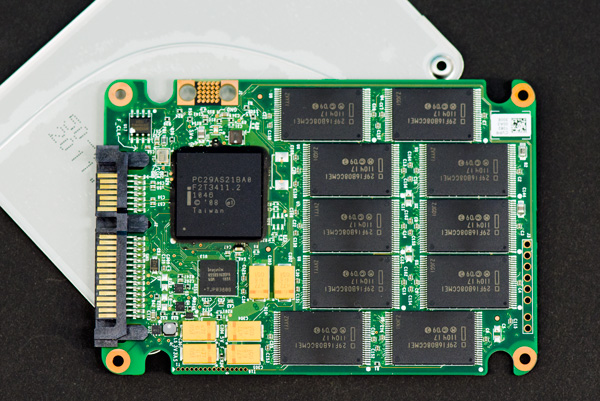

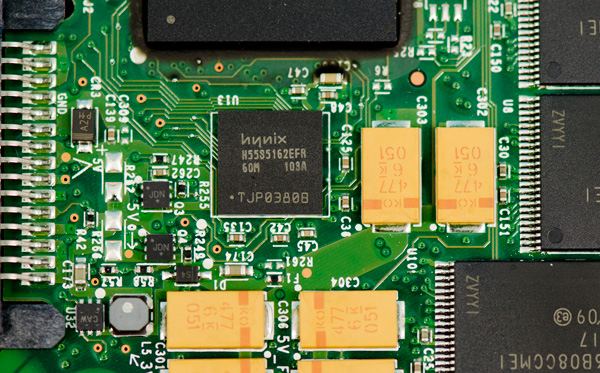
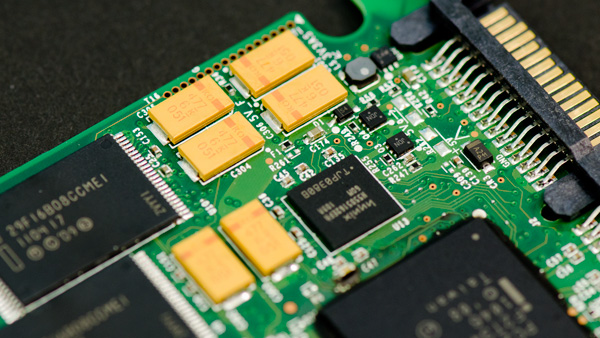








194 Comments
View All Comments
hackztor - Monday, March 28, 2011 - link
very sad from Intel. Was waiting for these and disappointed. Last gen performance...Price is not very exciting either.Wolfpup - Monday, March 28, 2011 - link
Looks good to me. Intel reliability, FINALLY larger drive sizes + automatic full disk encryption is awesome.Only bad thing is I can't actually find them on Amazon or Newegg yet, and I'd like one for a new system...
vol7ron - Monday, March 28, 2011 - link
You must be blind.This is to the X25-M G2 what Vista was to XP. It's a, "don't buy unless you have to" situation.
OCZ/SandForce have to be laughing - Intel is in shambles. First, SSD delays, then Mobo chipset recalls, then Chandra Anand quits, and now this crap.
Sure, their SSD is still reliable and it's not a bad product, but the pricing isn't even that great. Maybe they don't need to implement the SF-2k series algorithm, but some sort of compression engine would be nice. Claiming powerout reliability is like saying, "we just don't know how to make these capacitors hold a charge." Honestly, I don't care if you have to add a backup NiCad battery. Sure Intel has had reliability down, but they've had over a year to work on speed - this is akin to the Western Digital SSD release; of course it's much more attractive, but it's the reliability vs speed situation.
Who knows, maybe Intel's laughing at us just as hard as OCZ is laughing at them.
Griswold - Tuesday, March 29, 2011 - link
Actually, I'm laughing at you and your nonsense theories. Thanks for that.vol7ron - Tuesday, March 29, 2011 - link
:) a little lite accusations for a comical releaseThermogenic - Tuesday, March 29, 2011 - link
Intel is in shambles? LOL.vol7ron - Tuesday, March 29, 2011 - link
Okay, maybe a little bit of exaggeration, but this wasn't a strong release and they've had their large share of problems lately - don't you think?x86 will have a tough time dealing with RISC. I think RISC is just a better technology, since it doesn't have to deal with legacy instructions. That translates to performances and power efficiencies.
While Intel does still have some room to shrink the die, there isn't much room with current technologies. Also, the ARM chips will continue to decrease in die shrinks as well. That being said, there was some evidence that there could be a cheap alternative to Silicon on the horizon, which would allow for smaller theoretical components. (http://www.dailytech.com/Researchers+Claim+Molybde...
The way I see it, this is similar to when Intel moved the mem controller of the chipset and onto the die. They could have done it sooner, but they are good at extracting $$ from their customers. They reached the high clock rate track and had re-think their position.
While Intel may not be in shambles per se, in its current state, Intel has dished out a lot of debt, they haven't done too well with their NVidia relationship, and they're struggling in the mobile space. And I think AMD is still the better choice on the server front, if I recall correctly. This is all going on while their CEO is on the Obama's Job Council, which I still say that was probably not the best decision.
So, for a company that's been ahead for the last few years, they still have some short-term capabilities, but it's the long term that's important. They need to be successful in breaking into and building a new market segment (Mobile/HTPCs/SSDs).
Wiggy McShades - Tuesday, April 5, 2011 - link
Right now intel has to at very least TRY to hold on to x86 because they only have one competitor in this area, a competitor is severely limited compared to intel, which means huge profits. Intel could easily license the arm architecture and produce an soc that'd blow the everything out of the water. The reason I'm saying this is their manufacturing capabilities are the best in the world which means a LOT for producing microprocessors and currently their cpu's are just a RISC design that translates x86 instructions, so they'd really not even have to hire new engineers. Although then that means a loss in confidence in x86 and could lead to a transition to the arm architecture which they don't control. They probably know x86 isn't going to make it forever, but holding on to it for now is extremely profitable. We'll see how crafty they can get in shoehorning x86 into the mobile arena and that should truly decide how much longer x86 will be around. Intel can easily stand on their manufacturing capabilities and the insanely talented engineers they employ to compete in any up and coming markets, but it's just in their best interest to try and keep x86 dominance for now.FunBunny2 - Saturday, January 14, 2012 - link
Just re-reading, and Intel hasn't built a X86 chip with the instruction set in hardware in more than a decade. There chips are RISC with a X86 suit.piroroadkill - Friday, July 5, 2013 - link
Haha, it's fun reading these old comments, this is one so ill-conceived it makes me laugh.I have an Intel 320 120GB and it still works perfectly. Same can't be said for the OCZ Vertex 2 it replaced, and of course, we all know what happened to OCZ and partly Sandforce's reputation..